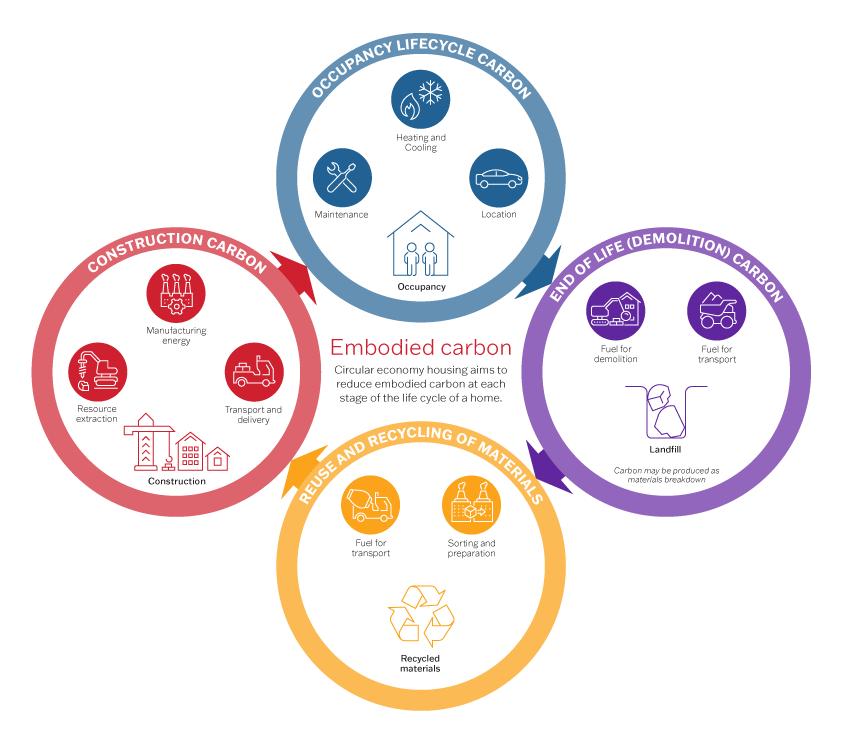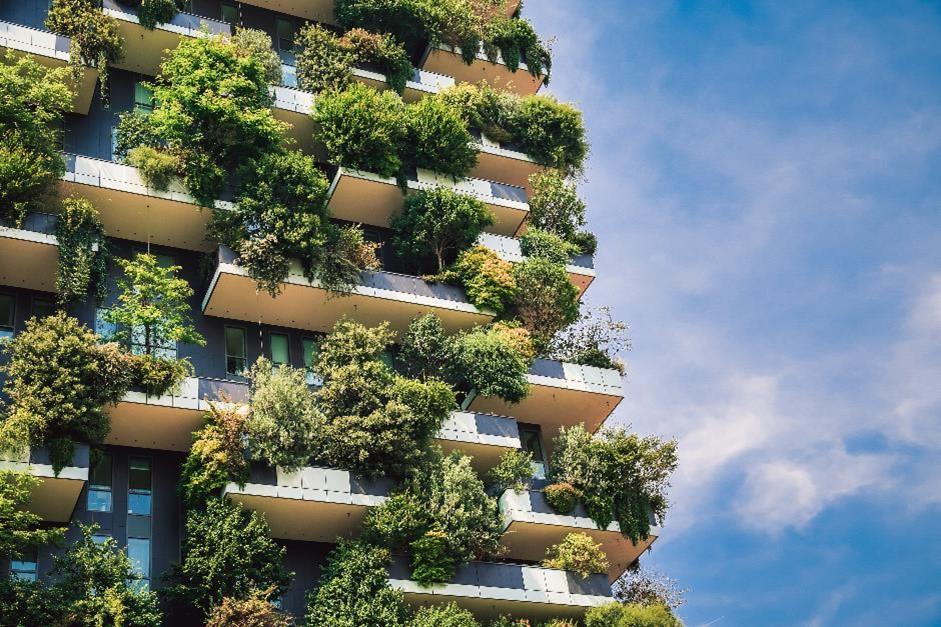
What is a circular economy for housing, and what will help Australia achieve it?
Momentum is growing in the development of a sustainable circular economy for Australia, with Commonwealth Government initiatives supporting investments in priority areas such as advanced manufacturing, plastic recycling, value-add in resources and low emission technologies.
However, the housing sector lags in its contribution to such an economy and remains a major source of carbon emissions.
This AHURI Brief explains how housing functions in a circular economy, and what Australian governments need to do to make the shift toward a more circular housing sector.
The strategies and actions required for the Australian residential sector to make this shift will be the focus of AHURI’s One Day Conference: Circular Economy Housing – making the shift, which will be held in Sydney on 9 May 2024.
26 Mar 2024
Why does Australia need to consider a circular economy for housing?
The Australian construction industry, which includes the housing industry, was responsible for 18 per cent of Australia’s carbon footprint (in 2013). Residential building construction contributed to around a quarter (24%) of these emissions.
With the number of households in Australia projected to grow from just over 9 million in 2021 to around 13 million households by 2041, reducing the greenhouse gases released through housing construction is urgent if Australia is to meet its 2030 target of reducing greenhouse gas emissions.
What are the attributes of housing in a circular economy?
A common misconception is that a circular economy is primarily concerned with recycling waste. While waste is one aspect, a circular economy has a range of more holistic aims, both environmental and social:
From an environmental and resource management perspective, the circular economy for housing functions as a ‘closed-loop’ system that minimises embodied carbon. This means:
- construction with low-emission, durable materials, aiming to minimise environmental impacts associated with mining or manufacturing new materials
- design that enables carbon-neutral and energy-efficient living by the occupants
- end-of-life materials are reused or recycled rather than discarded as waste
Alongside reducing environmental footprints, in a circular economy housing aims to be:
- affordable, accessible, and purposefully located to reduce transport emissions
- comfortable for residents, with effective heating and cooling systems to minimize energy consumption
- resilient against climate change hazards such as flooding and bushfires
- accessible to diverse income groups, particularly those with lower income.
What is embodied carbon in the context of housing?
At its simplest, embodied carbon is the carbon dioxide gas that is emitted from the energy used in the creation of a home. This includes the mining or harvesting and processing of building materials; transporting them to the building site; assembling the building materials into the building’s structure; and finally demolishing the building and transporting the building waste to reprocessing or to landfill.

Currently, embodied carbon contributes to 16 per cent of all the carbon emissions generated over the life time of each building, with the remainder of carbon emissions coming from heating and cooling during the home’s occupancy.
Getting to a functioning circular economy for housing requires leadership from the finance industry, business and government
AHURI research reveals that to implement the circular economy, all major processes in the housing ecosystem will need to be transformed. The way buildings are designed and funded, together with the way materials are extracted, produced, consumed and disposed of all need change to achieve more resource-efficient and sustainable use, reuse and reprocessing.
Since most people building or buying housing are reliant on getting a loan, financial institutions’ policies and practices are influential. There are already cases in Australia of finance providers steering developers towards more energy-efficient design specifications as an outlet for ‘green capital’, which may offer better loan rates for projects that comply with defined environmental performance standards.
Businesses working in all facets of housing and construction will need to understand and be engaged with the circular economy. They will require contracts that specify lower-embodied carbon materials; energy efficient design; and intentional use of building materials that allow for deconstruction and reuse of materials to minimise deconstruction waste.
Commonwealth, State/Territory and local Governments also have an important part to play in creating and reinforcing the circular economy, including:
- policies to deliver energy efficiency and zero-waste
- better regulations on material flows
- upscaling technological improvements
- writing circular economy conditions into contracts
- enabling measurement, tracking and record keeping of the embodied carbon footprint of building materials.
The transition to a low-carbon construction sector will require a higher- and more diversely skilled workforce. To build capacity, training and education about the circular economy is vital for key stakeholders, including policy makers and administrators, as well as private-sector workers across a range of trades and professions, from carpentry to finance to urban planning.
The shift to circular construction for housing presents significant challenges; it also offers immense opportunities – not just for improving environmental sustainability, but also for boosting economic resilience and increasing social equity. Further dialogue, leadership and action in the residential sector is urgently needed in order to harness these opportunities.

